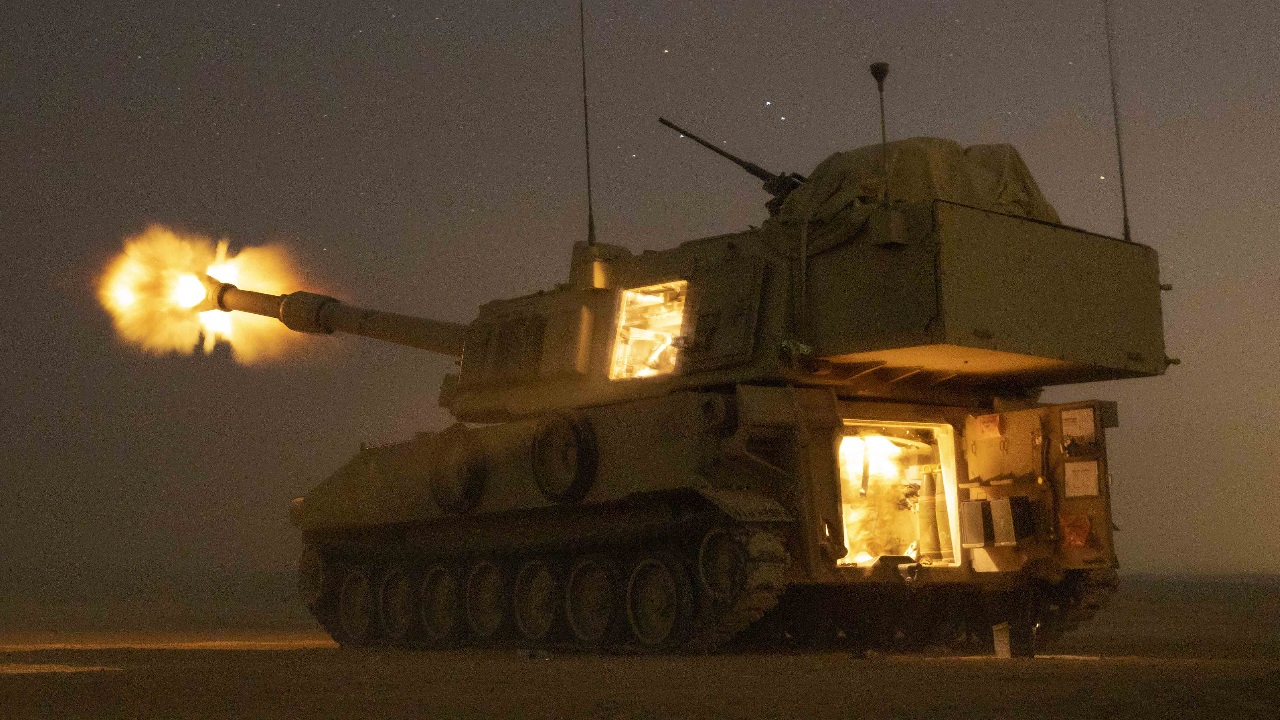If Russia’s ongoing invasion of Ukraine could be summed up in two words it would be “ill-equipped.”
Since February 2022, Moscow has deployed thousands of conscripts to the frontlines of the war without proper training, enough military equipment, or logistics. Largely sanctioned by the international community, the Kremlin has struggled to produce enough ammunition and other essential weaponry to aid its troops. Russian forces have even had to rely on antiquated Soviet-era equipment during its invasion. More and more reports concerning the bleak treatment of Russia’s soldiers are coming to light.
Leaked Phone Calls Show Russian Soldiers are Fed Up in Ukraine
An exclusive report by Reuters outlined excerpts from 17 phone calls placed over the summer by Russian forces fighting in Ukraine. According to the outlet, Ukraine’s main intelligence agency, the Security Service of Ukraine (SBU), intercepted these conversations made by soldiers positioned in the south and east of the country. Using a litany of expletives, one soldier even compared the ongoing invasion to the brutal moments of Germany’s invasion of the Soviet Union during the Second World War. Other phone calls centered on the lack of equipment and ammunition provided to frontline soldiers, a fact that has been widely reported on throughout the last year and a half of warfare.
How is Combat Worsening Morale?
While these bombshell phone calls indicate a worsening morale among Russia’s foot soldiers, they are really nothing new. Back in January, a video that widely circulated on social media depicted a group of more than two dozen Russian soldiers pleading for aid. “We are the soldiers of the 1st, 3rd, and 4th Platoons, 254th Regiment, 7th Company, 3rd Battalion. Please help us sort out the situation,” the soldiers say in the video. “Our commander gave us an order not to retreat from our positions. But the commander gave us no cover and no support. We had only machine guns, and all the rest of the weapons were damaged.”
The release of this video coincided with other revealed complaints made by Russian troops, including stalls in payments, food supply, and even management and organization among commanders.
As the invasion progressed this year, Kyiv’s counteroffensive has undoubtedly highlighted the severe lack of basic military supplies Russia’s troops possess. Shortly after Ukraine’s efforts to recapture territories commenced in early June, families of Russian soldiers deployed along the front lines of the war accused their military of setting them up for disaster. As detailed by a report from the independent Russian news outlet Astra, these spouses claimed that their husbands were sent into battle without uniforms, aviation, and artillery support.
Moscow Needs More Tanks and Ammo
Besides ammunition, Russian soldiers have notably been lacking modern armored vehicles. The initial main battle tanks (MBTs) deployed by Moscow were largely wiped out by Ukrainian forces. In the early months of the invasion, countless videos depicting the destruction of T-72s, T-80s, and T-90s indicated the advantage Kyiv’s western-delivered supply of anti-tank weapons and lethal unmanned aerial vehicles (UAVs) had over Russian tanks. Ukrainian soldiers were also able to capture hundreds of Russian MBTs left behind by soldiers ill-equipped and ill-prepared to maintain them. Notably, logistical issues resulted in some tank operators being sent to the frontlines without enough fuel for the journey.
Today, the open-source intelligence tracker Oryx has meticulously tracked thousands of destroyed Russian tanks throughout the invasion. According to the group, at least 2,100 MBTs have been captured, abandoned, or obliterated by Ukraine. Kyiv’s numbers surrounding the loss of Moscow’s tank fleet are much higher. In June, Ukraine’s military estimated that Russia had lost closer to 4,000 tanks. However, both sides tend to exaggerate claims and are hesitant to report true figures surrounding the war. An assessment released by the U.S. Defense Intelligence Agency this past Spring estimated that while Moscow had lost up to 43,000 troops, Ukraine had lost up to 17,500.
Will Kyiv’s Counteroffensive Pick-Up Speed?
Since Kyiv’s counteroffensive kicked off earlier this summer, Ukraine has struggled to make the progress expected by Western officials. Confronting mine-laden regions has proven to be a difficult and challenging feat for Kyiv’s soldiers to overcome, hindering the amount of territory they have been able to recapture. Some U.S. officials, however, believe that the tides could change for Ukraine in the new year.
In an interview with the Washington Post, Retired U.S. Army Brig. Gen. Mark Arnold outlined why Kyiv’s counteroffensive strategy is efficient, despite other claims. Arnold has relayed that without proper air defenses and additional long-range artillery systems, Kyiv’s best bet is to progress slowly in order to avoid excess human casualties and wait out the delivery of Western deliveries.
The White House pledged to deliver 31 M1A1 Abrams MBTs to aid Kyiv’s defensive efforts earlier this year, which are set to arrive sometime this fall. In addition to more equipment and ammunition, Arnold believes the U.S. should provide training to elevate Ukraine’s military.
“The Western training of Ukrainian military during the past 15 months is 85 percent basic training, 5 percent small unit leader training and 10 percent battalion training, those efforts have trained less than 5 percent of Ukraine’s ground forces, and almost no officers at battalion level and above,” Arnold said.
The U.S. and its NATO allies have provided billions of dollars worth of military aid and equipment to support Ukraine over the last year and a half of warfare. As the counteroffensive continues, how long is the U.S. and its allies willing to provide Kyiv with the military support it needs?
Maya Carlin, a Senior Editor for 19FortyFive, is an analyst with the Center for Security Policy and a former Anna Sobol Levy Fellow at IDC Herzliya in Israel. She has by-lines in many publications, including The National Interest, Jerusalem Post, and Times of Israel. You can follow her on Twitter: @MayaCarlin.
From the Vault
‘He Should Quit’: Donald Trump Just Got Hit With A Devastating New Poll

